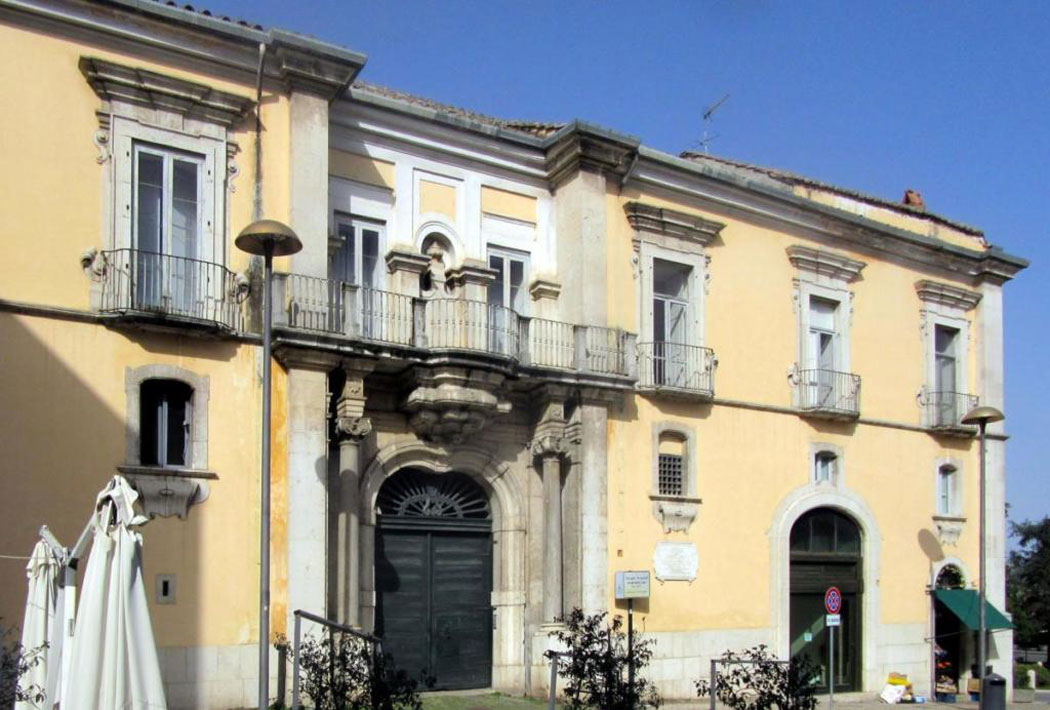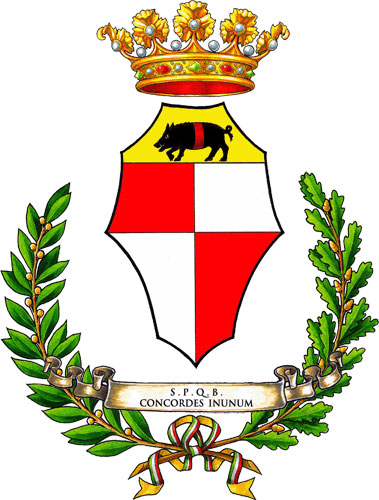

The history of Benevento begins with the proud people of the Samnites, although a legend says that it has Greek origins and was founded by Diomedes. He was a Greek hero who escaped the Trojan fire and who was to bring a fang of the Calydonian boar to the city. It is a legend but it is found in the emblem of Benevento.
Originally its Samnite name was Maloentum, and the Romans clashed many times against the Samnites in their conquest of Southern Italy. The first war occurred in 324 BC. and the city was renamed Maleventum for its success against the Romans. In reality the Romans managed eventually to overcome the Samnites by force and by skilled diplomatic agreements with neighboring populations while the Samnites have always been remembered for their audacity.
Its name later became Beneventum named after the other two Samnite wars won by the Romans and, above all, the great victory against Pyrrhus, the king of Epirus who arrived with his elephants in 275 BC.
The Roman town of Benevento was populated by the colonists and it became strategic for its position along the Via Appia that went to Brindisi, the port of Rome to the east. In 86 BC it became Municipium and during Imperial Rome the Via Traiana started from here and went to Brindisi.
At the beginning of the street, the emperor Trajan had a Roman arch built around 117, one of the most beautiful and best preserved examples in the world. The importance of the city is also revealed by another large building, the Roman theatre which, after being plundered of marble to make churches, is now back in operation and hosts unforgettable shows.
With the birth and organization of the Catholic church, Benevento became a bishopric from the 4th century and Benedictine monks were important in safeguarding ancient knowledge.
Its decline began with an earthquake in 369 and the fall of the Roman Empire and the looting by the numerous hordes of barbarians that followed. Its position at the intersection of two major arteries that headed south always made it a privileged place for control of trade and the passage of the military, and its history was to be defined by its geography.
A period of rebirth came with the Lombards who placed it at the head of a duchy born in 571 and which then became a principality in 840. With ups and downs, this duchy resisted until the arrival of Roberto i Guiscardo in 1053.
Initially the Lombards settled in the fortress, the highest point of the city, and built a keep probably on a previous Samnite foundation. Because of its location, this place had also been a Roman spa and a Benedictine monastery.
Langobardia Minor was the name of a kingdom that brought masterpieces such as the church of Santa Sofia which today is a UNESCO World Heritage Site as part of the legacy of the Lombards in Italy.
The fame of Benevento as 'City of the Witches' is probably also due to the Lombards, perhaps for the pagan rites that they carried out near the river Sabato and in particular under the walnuts of Benevento. During the period of the Inquisition and the witch hunt, many trials were held in Benevento.
In 1077, Henry III gave it to the church and Benevento was practically a small branch of the papal state within the Kingdom of Naples. It was governed by 'papal rectors' who resided inside the castle, in what became the Palazzo dei Governatori (Palace of Governors) in the fourteenth century and which we can still admire.
Being a small autonomous state did not diminish the desire for conquest by the various sovereigns who invaded southern Italy, such as the Swabians of Frederick II.
And here Manfredi of Swabia died at the hands of Charles I of Anjou, the French ruler who annihilated the house of Frederick II of Swabia and their influence in Italy, and returned Benevento to the church.
The arrival of the Spaniards of Aragon did not bring about great changes and the Duchy of Benevento remained an area with a special status and a particular influence of the papacy but always surrounded by the kingdom of Naples. The Spanish besieged the city in 1633 to remind the region of their supremacy over the papacy.
In 1688, the life of the city was marked by a disastrous earthquake in which Cardinal Orsini, who would later become Pope Benedict XIII, was saved. In thanks he engaged in the reconstruction of the city and is remembered as Alter Conditor Urbis, the new founder of the city.
For a short period, in the eighteenth century Benevento was occupied by Ferdinand IV of Bourbon and, during the French occupation period of Napoleon, Benevento again became a principality headed by Talleyrand. It then returned to the Church until 1860 when it entered the Kingdom of Italy.
The patron saint is San Barbato, who was one of the Catholic bishops of Benevento and was called the Apostle of Sannio for his conversion of the Lombards.
Benevento is part of the Cities of Wine due to the taste of its exceptional Sannio Falanghina, one of the most famous white wines in the world, loved by emperors and popes and an essential wine to be tried.









Follow us